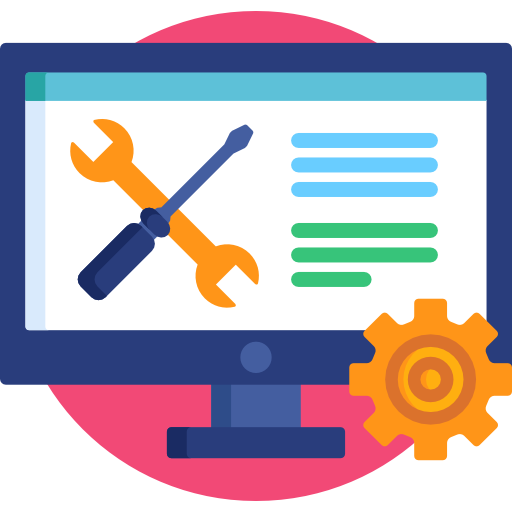Are you just beginning your adventure with Search Engine Optimization (SEO)? It’s possible that you’ve heard that SEO can improve your website’s visibility and increase traffic.
Our goal is to clear up any misunderstandings or problems surrounding search engine optimization, while also providing some context for artificial intelligence. After you grasp the principles, you may discover how to use SEO to increase traffic and produce high-quality leads.
What is Search Engine Optimization(SEO)?

The practice of obtaining traffic via free, organic, editorial, or natural search results in search engines is known as “search engine optimization,” or SEO. It seeks to raise the ranking of your website in search engine results pages (SERPs). Recall that more people will view a website the higher it is ranked.
Search Engine Optimization, or SEO for short, is like giving your website a makeover to make it more attractive to search engines like Google. When someone looks for something online, they type words into the search bar. SEO or search engine optimization helps your website show up higher on the search results page, which means more people are likely to click on it. It involves using certain tricks and strategies, like using relevant keywords, creating quality content, and getting other websites to link to yours. SEO or Search Engine Optimization helps your website get noticed by the right people and brings in more visitors.
Search engines like Google and Bing are no longer the exclusive domain for SEO. As more people rely on social media to obtain knowledge, it’s also critical for social networks like YouTube and TikTok.
What are the pillars of Search Engine Optimization or SEO?
Being able to get your brand, website, or business discovered by search engines is a fundamental skill for digital marketers, and being up to date with Search Engine Optimization or SEO trends can help you stay competitive.
Although search engine optimization (SEO) is always evolving in tiny ways, its fundamental ideas never change. We may divide SEO into three main pillars or components that you should regularly practice and understand:
On-Page Optimization
Making sure the content on your website is both relevant and offers a positive user experience is known as on-page Search Engine Optimization(SEO). It involves using content management systems (CMS) like as WordPress, Wix, Drupal, Joomla, Magento, or Shopify to target the appropriate keywords within your content.
Making sure the material is both relevant and offers a positive user experience is known as on-page SEO or on-page search engine optimization. Many companies used to approach it as simple keyword stuffing, meaning they would mention their keywords as much as possible in the content. The user experience was subpar as a result. These days, smart keyword targeting—mentioning keywords in important parts while maintaining a positive user experience—is a part of on-page optimization. This indicates that your material both reads smoothly and meets the user’s actual needs.
Making sure the material is both relevant and offers a positive user experience is known as on-page SEO. Many companies used to approach it as simple keyword stuffing, meaning they would mention their keywords as much as possible in the content. The user experience was subpar as a result. These days, smart keyword targeting—mentioning keywords in important parts while maintaining a positive user experience—is a part of on-page optimization. This indicates that your material both reads smoothly and meets the user’s actual needs.

Off-Page Optimization

The technique of improving your website’s search engine results through off-site actions is known as off-page optimization. High-quality backlinks, which contribute to the site’s reputation-building, are a major factor in this. Building links may not be the simplest job, but here are four strategies to tackle it.
Similar to the demise of keyword stuffing, the practice of purchasing or exchanging spammy backlinks with the intention of raising page rank has also become obsolete.
Since search engines have long since been aware of these tactics, placing a lot of unnecessary backlinks on your page will hurt rather than help your website’s ranking.
Although the quantity and quality of your backlinks (together with the number of referring websites) are factors that search engines consider, quality takes precedence over quantity.
The most important lesson is that, even though off-page SEO relies heavily on backlinks, a single high-quality backlink from a reputable website is more valuable than ten or even one hundred low-quality links.
Building links may not be the simplest job, but here are four strategies to tackle it.
To establish oneself as an authority in your industry, write guest blogging. To learn more about how it functions, have a look at our tools and tutorial on guest blogging.
Write material that highlights influential people in your industry; these kinds of postings are often well-liked. If you think this will play a significant role in your business or role, think about developing an influencer marketing approach.
Look for broken links on blogs related to your industry, especially those run by influential bloggers. Offer to replace the broken link with one of your own articles about the same topic. You can obtain an on-site SEO guidebook and toolkit, as well as some resources and instructions for a content audit, to get you started.
Technical Optimization
The practice of doing tasks on your website that have nothing to do with content but are intended to boost search engine optimization or SEO is known as technical optimization. It frequently occurs in the background. Adding your sitemap to Google is a basic example of technical optimization.
Technical SEO (search engine optimization) optimization focuses on improving the technical aspects of a website to enhance its visibility and performance in search engine results. One key aspect of technical search engine optimization (SEO) is ensuring that the website is easily accessible and navigable for search engine crawlers. This involves optimizing website structure, URL structure, and internal linking to ensure that all pages are indexed efficiently by search engines. Additionally, technical search engine optimization SEO involves optimizing website speed and performance, as faster loading times can positively impact search engine rankings. This may include optimizing image sizes, minimizing code, and utilizing caching techniques to improve website speed.
Another important aspect of technical search engine optimization (SEO) is ensuring that the website is mobile-friendly and responsive across various devices. With the increasing use of mobile devices for internet browsing, search engines prioritize mobile-friendly websites in their rankings. Technical SEO optimization involves implementing responsive design principles, optimizing viewport settings, and ensuring that content is displayed correctly on mobile devices. Furthermore, technical SEO includes optimizing website security by implementing HTTPS encryption and ensuring that the website is protected against security threats such as malware and hacking attempts.
In summary, technical SEO optimization involves improving the technical infrastructure of a website to enhance its visibility, accessibility, and performance in search engine results. By optimizing website structure, speed, mobile-friendliness, and security, websites can improve their search engine rankings and provide a better user experience for visitors. Technical SEO is an essential aspect of overall SEO strategy and plays a crucial role in ensuring that a website achieves its full potential in search engine rankings.

What's the real deal with how search engines work?
People utilize search engines when they have a question and want to look for the solution online.
Computer programs known as search engine algorithms hunt for hints to provide users with the precise results they want. To identify online sites and determine which ones to rank for a particular phrase, search engines rely on algorithms. Keep in mind that search should also take social media algorithms into account.
Search engines operate in three stages: crawling, indexing, and ranking.
Step 1: Search Engine Crawling

Crawling is the initial stage. Web crawlers are sent out by search engines to discover new pages and gather data about them. These web crawlers are sometimes referred to as “robots,” “spiders,” or “Googlebots.”Their goals are to find new websites that are available and to sporadically check previously viewed pages to determine if the information has changed or been updated.
Search engines use links they have already found to go across web pages. As a result, if your blog is linked from your homepage, a search engine that is crawling your site will check for and maybe follow the connection to your most recent blog post.
Search engine crawling is the process by which search engines like Google discover new and updated web pages to include in their index. Crawling is like a spider exploring the web, following links from one page to another. When a search engine crawler visits a webpage, it analyzes the content and follows any hyperlinks present on that page to other pages. This process continues recursively, allowing search engines to build a comprehensive map of the internet. The frequency of crawling can vary depending on factors such as the website’s authority, update frequency, and importance.
During the crawling process, search engine crawlers collect information about each webpage they visit, including its content, metadata, and links. This information is then used by search engines to determine the relevance and quality of a webpage for specific search queries. Websites that are regularly crawled and indexed by search engines are more likely to appear in search results, making crawling an essential aspect of search engine optimization (SEO). Webmasters can influence crawling behavior by optimizing their website structure, internal linking, and XML sitemaps to ensure that search engine crawlers can easily discover and index their content.
Step 2: Search Engine Indexing

Indexing comes in second. A search engine uses indexing to determine which of the content it has crawled will be used. A crawled webpage will be added to a search engine’s index if it is judged worthy. This index is applied during the last round of ranking. A web page or other piece of content that has been indexed is filed and kept in a database from which it can be retrieved at a later time. The majority of websites with excellent and original material are added to the index.
Search engine indexing is the process where search engines like Google organize and store information from web pages in their vast databases, known as indexes. After a webpage has been crawled and analyzed by a search engine crawler, the next step is indexing. During indexing, the search engine extracts relevant information from the webpage, such as keywords, metadata, and content, and adds it to its index. This allows the search engine to quickly retrieve and display relevant results when users enter search queries. Indexing helps search engines understand the content and context of web pages, enabling them to provide accurate and relevant search results to users.
Once a webpage is indexed, it becomes part of the search engine’s database and is eligible to appear in search results. However, not all indexed pages will rank equally in search results, as search engines use complex algorithms to determine the relevance and quality of web pages for specific search queries. Webmasters can optimize their web pages for indexing by creating high-quality, relevant content, using descriptive titles and meta descriptions, and ensuring proper HTML markup. By understanding the indexing process and implementing SEO best practices, webmasters can improve their website’s visibility and performance in search engine results.
A great suggestion is to use the search box and type “site:yourdomain.com” to see which pages are indexed (see our example below). This will display the pages that appear on Google. You can view the “Index Coverage report” in Google Search Console for a more thorough analysis.
Step 3: Search Engine Ranking

Actually, the most crucial stage is the third one, which is ranking. Crawling and indexing must be finished before ranking may take place. Your website can then be ranked when a search engine has crawled and indexed it.
Technical optimization, on-page optimization, and off-page optimization are the three pillars of SEO, and together they account for more than 200 ranking signals that search engines employ to sort and rank content.
Search engine ranking refers to the position of a website or webpage in the search engine results pages (SERPs) for a specific keyword or query. A higher ranking indicates better visibility and increases the likelihood of attracting organic traffic to the website.
Achieving a high search engine ranking requires implementing effective search engine optimization (SEO) strategies, including optimizing website content, building quality backlinks, improving website speed and user experience, and ensuring mobile-friendliness. A strong search engine ranking is crucial for businesses to enhance online visibility, drive targeted traffic, and ultimately, increase conversions and revenue.
